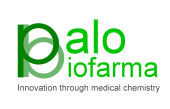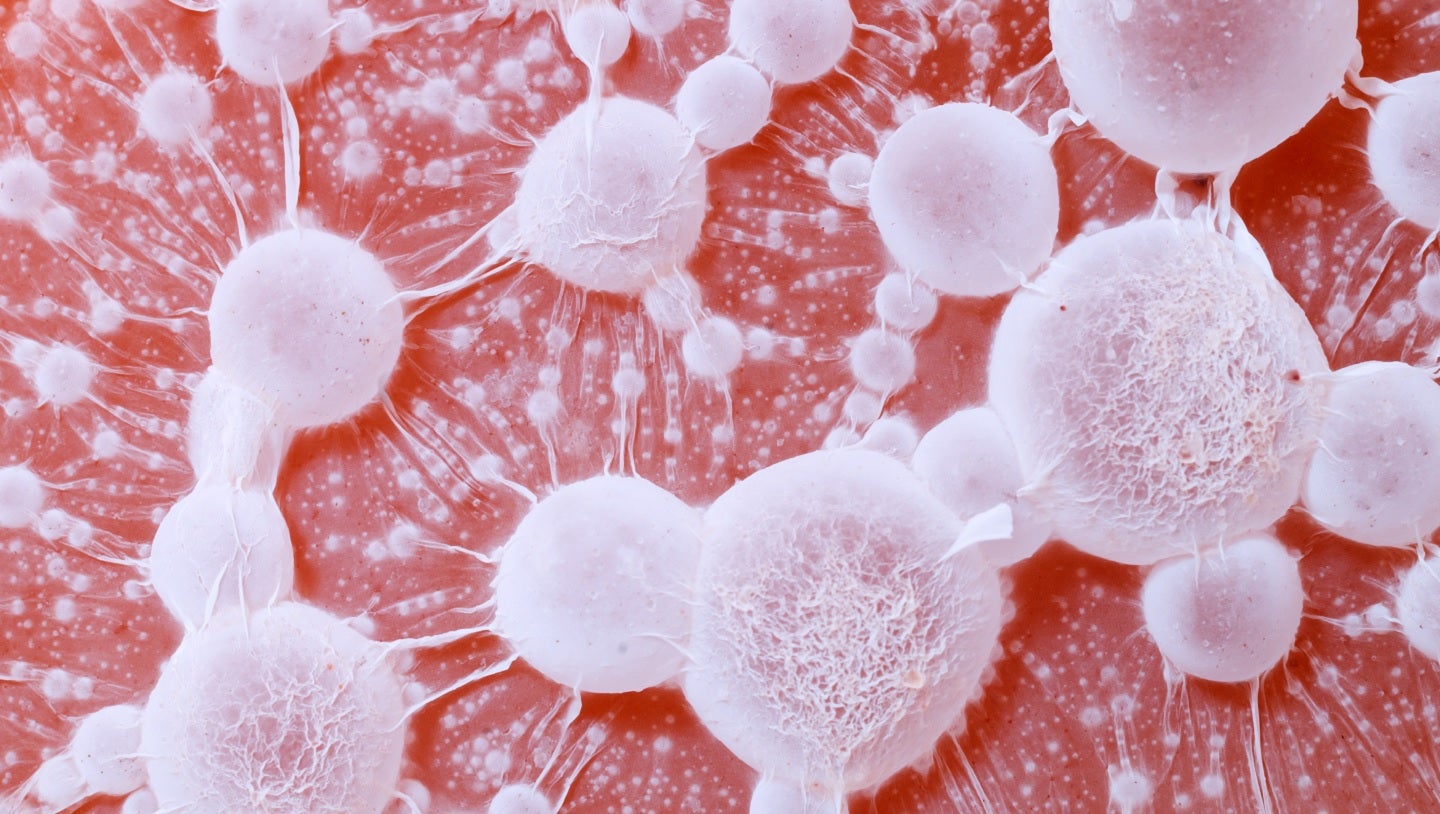预约演示
更新于:2025-05-07
PBF-999
更新于:2025-05-07
概要
基本信息
原研机构 |
在研机构 |
非在研机构- |
最高研发阶段临床2期 |
首次获批日期- |
最高研发阶段(中国)- |
特殊审评孤儿药 (欧盟) |
登录后查看时间轴
结构/序列
分子式C9H8BrN7 |
InChIKeyOQCWNHHZPYJHQR-UHFFFAOYSA-N |
CAS号1620909-95-6 |
关联
4
项与 PBF-999 相关的临床试验CTIS2022-501462-22-00
A Phase 2 Study to Evaluate Efficacy, Safety, and Pharmacokinetics of PBF-999 in the Treatment of Patients with Prader-Willi Syndrome. - PBF-999CT-04
开始日期2023-03-14 |
申办/合作机构- |
NCT03786484
Phase I/Ib Trial of Single Agent PBF-999 in Solid Tumour Advanced Cancer
Multicentric phase I (dose escalation plus expansion) clinical trial of PBF-999 in patients with immunotherapy naïve and pretreated solid tumors to evaluate the safety, tolerability and preliminary efficacy of the compound
开始日期2017-10-01 |
申办/合作机构  Palobiofarma SL Palobiofarma SL [+1] |
NCT02907294
Randomized, Double Blind, Placebo Controlled, Parallel Groups Study to Assess the Safety, Tolerability and Pharmacokinetic Profile of PBF-999 (160 mg and 320 mg) "After Multiple Oral Doses" in Healthy Volunteers
To assess the safety and tolerability of five doses of PBF-999 (160 mg and 320mg) after repeated (8 days) single daily oral dose administration in young male and female healthy subjects.
开始日期2016-03-01 |
申办/合作机构  Palobiofarma SL Palobiofarma SL [+1] |
100 项与 PBF-999 相关的临床结果
登录后查看更多信息
100 项与 PBF-999 相关的转化医学
登录后查看更多信息
100 项与 PBF-999 相关的专利(医药)
登录后查看更多信息
5
项与 PBF-999 相关的新闻(医药)2024-02-22
Harmony reported Wakix (pitolisant) sales of $582m for full-year 2023, according to its annual report. Credit: rafapress via Shutterstock.
US-based biopharmaceutical company Harmony Biosciences has secured a US Food and Drug Administration (FDA) orphan drug designation for its drug pitolisant, an investigational treatment for Prader-Willi Syndrome (PWS).
Harmony now plans to advance the candidate into a Phase III clinical trial. The planned registrational TEMPO study will assess the safety and efficacy of pitolisant in treating excessive daytime sleepiness (EDS) and behavioural disturbances seen in PWS. Harmony has announced that it aims to initiate the global study in Q1 2024, enrolling patients six years and older with PWS.
Commercialised as Wakix in the US, pitolisant is approved by the Food and Drug Administration for the treatment of Ehlers-Danlos syndrome (EDS) or cataplexy, a sudden muscle weakness that occurs while a person is awake, in adult patients with narcolepsy.
The selective histamine 3 (H3) receptor antagonist/inverse agonist was initially developed by France-based Bioprojet, which granted an exclusive licence to Harmony for the development, manufacturing, and commercialisation of pitolisant in the US in 2017.
Harmony reported Wakix sales of $582m for 2023, in its annual report. According to GlobalData’s Pharma Intelligence Center, pitolisant will generate nearly $2bn in sales in 2029, potentially being driven by an increase in demand following a possible approval for PWS.
See Also:
Immune-Onc’s antibody therapy collects second FDA orphan designation
Ono Pharmaceutical partners with EME for antibody drug discovery
GlobalData is the parent company of
Pharmaceutical Technology.
The orphan drug designation follows the announcement of preliminary positive Phase II (NCT04257929) data in 2022, where the trial met its primary endpoint of evaluating the variation on the Epworth Sleepiness Scale for Children and Adolescents (ESS-CHAD) to judge the therapy’s impact on EDS.
PWS is a complex genetic condition that affects many parts of the body. It’s characterised by weak muscle tone, feeding difficulties, delayed development, and other issues. One of the most prominent features is an insatiable appetite, which can lead to chronic overeating and obesity if not managed carefully.
In the announcement accompanying the orphan drug designation, Harmony’s chief medical officer Kumar Budur said: “We are excited about our upcoming Phase III TEMPO study and the progress we have made to broaden the clinical utility of pitolisant not just in Prader-Willi Syndrome but other rare diseases as part of our life cycle management programmes that, if successful, could potentially help over 100,000 patients.”
Last May, Spanish biopharmaceutical company Palobiofarma
teamed up with
the Foundation for Prader Willi Research (FPWR) to develop its PWS drug PBF-999. The candidate is currently being investigated in a Phase II clinical trial.
临床2期孤儿药引进/卖出临床结果上市批准
2023-11-06
Pamplona, Spain November 6, 2023 Palobiofarma S.L. announced that the U.S. Food and Drug Administration (FDA) has granted Rare Pediatric Disease (RPD) Designation for the company’s phosphodiesterase 10 (PDE-10) inhibitor, PBF-999, for the treatment of patients with Prader-Willi Syndrome (PWS). “Pediatric patients living with PWS suffer from hyperphagia, a significant unmet need with very limited treatment options,” said Julio Castro, PhD, Chief Executive Officer of Palobiofarma S.L. “Obtaining Rare Pediatric Disease Designation from the FDA is an outstanding achievement for a small Spanish Biotech company and supports our mission to provide PBF-999 as a potential new treatment option for patients suffering from PWS.” About Rare Pediatric Disease Designation Rare Pediatric Disease (RPD) Designation is granted by the FDA for serious or life-threatening diseases which affect fewer than 200,000 people in the United States and in which the serious or life-threatening manifestations primarily affect individuals less than 18 years of age. If a New Drug Application (NDA) for PBF-999 for the treatment of PWS is approved by the FDA, Palobiofarma S.L. may be eligible to receive a Priority Review Voucher (PRV) that can be redeemed to receive a priority review for any subsequent marketing application. This program is intended to encourage the development of new drugs and biologics for the treatment of rare pediatric diseases. About Prader-Willi Syndrome Prader-Willi syndrome (PWS) is a variable and complex genetic neurobehavioral disorder resulting from abnormality on the 15th chromosome. It occurs in males and females equally and in all races. Prevalence estimates range from 1:15,000 to 1:25,000 (approximately 400 000 to 530 000 affected people worldwide). The most common and challenging symptom among those diagnosed is hyperphagia, an intense, insatiable hunger characterized by a constant desire to eat. Individuals experiencing hyperphagia may engage in continuous eating, leading to life-threatening obesity. There is currently no pharmacological treatment for hyperphagia. About PBF-999 PBF-999 is a novel, potent and selective PDE-10 inhibitor discovered and patented by Palobiofarma. PBF-999 is in Phase 2 clinical development for the treatment of Prader-Willi Syndrome (PWS). About Palobiofarma S.L. Palobiofarma S.L., Inc. is a biopharmaceutical company committed to discovering, developing, and commercializing a pipeline of first-in-class therapeutics based on the modulation of the adenosinergic pathways. Palobiofarma exhibits one of the more robust and diversified pipeline of the Biotech sector worldwide, with six different compounds in clinical development targeting diseases of high unmet medical need and is financially supported by well known Spanish VCs like Inveready and Sodena. For more information, please visit www.palobiofarma.com.
临床2期申请上市优先审批
2023-05-05
Palobiofarma’s PBF-999 has been developed to treat solid tumours such as colon cancer. Credit: Nemeziya / Shutterstock.com.
Spanish biopharmaceutical company
Palobiofarma has collaborated
with the Foundation for Prader Willi Research (FPWR) to develop its PBF-999 to treat Prader Willi syndrome (PWS).
The company has received a new venture philanthropy award as a convertible loan from FPWR.
Recommended Reports
Reports
Von Willebrand Factor (VWF) Drugs in Development by Therapy Areas and Indications, Stages, MoA, R...
GlobalData
Reports
LOA and PTSR Model - Ocrelizumab in Relapsing Remitting Multiple Sclerosis (RRMS)
GlobalData
View all
It intends to utilise the funding from FPWR to partially fund its ongoing Phase II clinical trial of PBF-999, a dual adenosine A2a receptor antagonist/phosphodiesterase 10 (PDE-10) inhibitor.
The PDE-10 inhibitor has been developed to treat ‘cold tumours,’ such as colon cancers. It has already been assessed in three clinical trials.
Following observations of an appetite-reducing effect using PBF-999, Palobiofarma designed a clinical trial to assess its efficacy and safety in reducing hyperphagia (excessive hunger) in PWS adults.
Palobiofarma CEO Dr Julio Castro stated: “We are excited to receive this funding from FPWR, which will enable us to continue our mission of developing a treatment to help patients with PWS.”
Led by Dr Assumpta Caixàs, the clinical trial is being conducted at the university hospital Parc Taulí in Sabadell, Spain.
FPWR executive director Susan Hedstrom stated: “Effective treatments for PWS hyperphagia are sorely needed and we are pleased to support Palobiofarma’s efforts on this front.”
In 2018, Palobiofarma
commenced recruitment of participants
for a Phase I clinical trial of PBF-999 in patients with solid tumours.
Conducted at the Vall D Hebron hospital in Barcelona, Spain, the trial was designed to assess the tolerability and safety of PBF-999.

临床1期临床2期
100 项与 PBF-999 相关的药物交易
登录后查看更多信息
研发状态
10 条进展最快的记录, 后查看更多信息
登录
| 适应症 | 最高研发状态 | 国家/地区 | 公司 | 日期 |
|---|---|---|---|---|
| 普拉德-威利综合症 | 临床2期 | 西班牙 | 2023-04-28 | |
| 晚期恶性实体瘤 | 临床2期 | 西班牙 | 2017-10-01 | |
| 亨廷顿舞蹈病 | 临床2期 | 西班牙 | 2014-09-01 |
登录后查看更多信息
临床结果
临床结果
适应症
分期
评价
查看全部结果
| 研究 | 分期 | 人群特征 | 评价人数 | 分组 | 结果 | 评价 | 发布日期 |
|---|
No Data | |||||||
登录后查看更多信息
转化医学
使用我们的转化医学数据加速您的研究。
登录
或

药物交易
使用我们的药物交易数据加速您的研究。
登录
或

核心专利
使用我们的核心专利数据促进您的研究。
登录
或

临床分析
紧跟全球注册中心的最新临床试验。
登录
或

批准
利用最新的监管批准信息加速您的研究。
登录
或

特殊审评
只需点击几下即可了解关键药物信息。
登录
或

生物医药百科问答
全新生物医药AI Agent 覆盖科研全链路,让突破性发现快人一步
立即开始免费试用!
智慧芽新药情报库是智慧芽专为生命科学人士构建的基于AI的创新药情报平台,助您全方位提升您的研发与决策效率。
立即开始数据试用!
智慧芽新药库数据也通过智慧芽数据服务平台,以API或者数据包形式对外开放,助您更加充分利用智慧芽新药情报信息。
生物序列数据库
生物药研发创新
免费使用
化学结构数据库
小分子化药研发创新
免费使用
